Content
All issues / Volume 16 (2022) / Issue 9 (September)
Patricia Krawczak
Vol. 16., No.9., Pages 901-901, 2022
DOI: 10.3144/expresspolymlett.2022.65
Vol. 16., No.9., Pages 901-901, 2022
DOI: 10.3144/expresspolymlett.2022.65
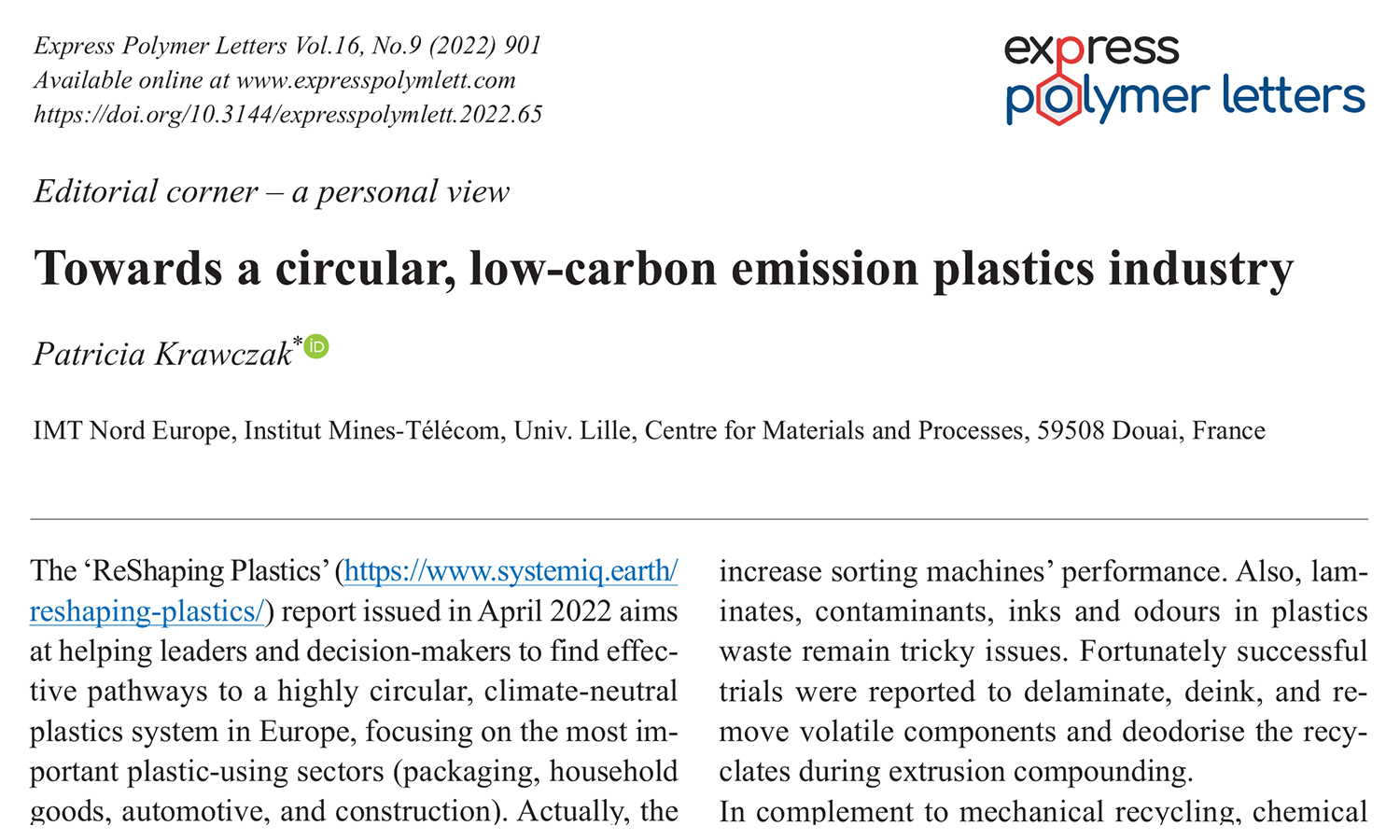
This is an editorial article. It has no abstract.
Lama Hewage Janitha Jeewantha, Jayantha Ananda Ananda Epaarachchi, Elizabeth Forster, Mainul Islam, Jinsong Leng
Vol. 16., No.9., Pages 902-923, 2022
DOI: 10.3144/expresspolymlett.2022.66
Vol. 16., No.9., Pages 902-923, 2022
DOI: 10.3144/expresspolymlett.2022.66
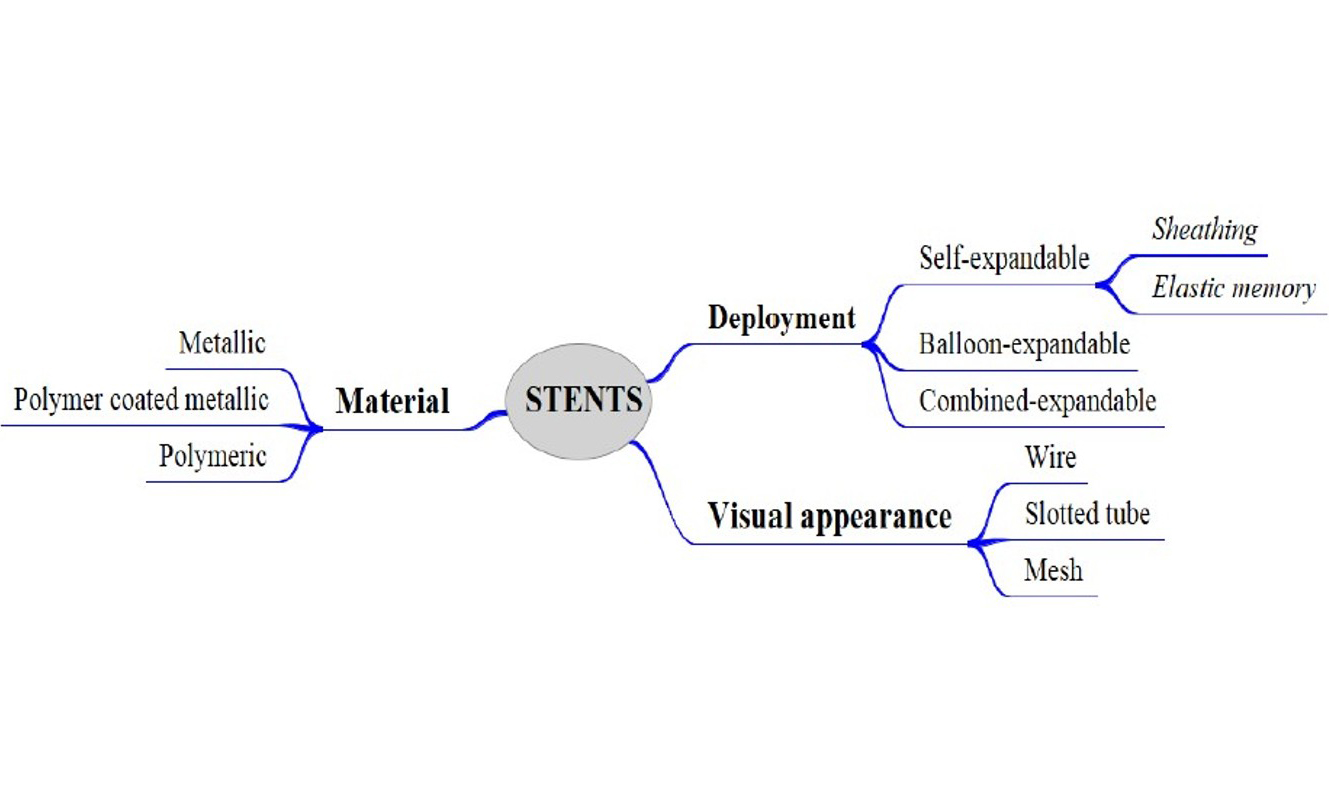
Shape memory polymers (SMPs) are smart materials that can alter their shape from a temporary shape to a permanent shape upon external stimuli. This unique property of SMP has shown enormous potential and breakthrough discoveries in biomedical engineering. A significant number of SMP based research publications in the recent past have demonstrated the researchers’ thirst to introduce SMP based devices to the biomedical fields. SMPs favour minimally invasive surgeries and showed enormous potential in vascular stents. However, SMP-based vascular stents have not been realised to date, indicating a lack of high-quality research outputs. Most studies either repeat or provide only minor extensions to ongoing research.
This article reviews SMP materials used for vascular stent development and briefly introduces SMP, architecture, and history.Followed by SMP vascular stent fabrication methods, responsive physical behaviour, the performance of the vascular stents, limitations, and vitro and vivo clinical results. Finally, challenges and future directions of SMP vascular stents are identified and highlighted.
Tiziana Bardelli, Claudia Marano, Francesco Briatico Vangosa
Vol. 16., No.9., Pages 924-932, 2022
DOI: 10.3144/expresspolymlett.2022.67
Vol. 16., No.9., Pages 924-932, 2022
DOI: 10.3144/expresspolymlett.2022.67

In this work, the change of the elastic properties induced by a change in cross-linking conditions of polydimethylsiloxane is investigated by measuring its shear modulus by dynamic mechanical analysis and correlating it to that predicted from swelling measurements. Polymer cross-linking is performed at different curing temperatures reached with ramps at different heating rates. From both mechanical and swelling measurements, the molecular weight between cross-links, MC, is determined, and its dependency on the applied thermal history is analyzed. The main results are: (i) the elastic modulus of the cured material is not significantly affected by the heating rate adopted, while (ii) the curing temperature has a significant influence on the polydimethylsiloxane mechanical properties. In addition, (iii) MC evaluation from swelling measurements is in good agreement with that estimated from mechanical measurements when appropriate theories are considered. This last result suggests that swelling experiments can be considered as a reliable tool to predict the elastic modulus of the polydimethylsiloxane studied. The quantitative information reported in this paper, also obtainable by the suggested method if other thermal curing histories are applied, is extremely useful for the proper design of devices based on polydimethylsiloxanes.
Judit Eva Puskas, Enikő Krisch, Aswathy Sasidharan Pillai, Prajakatta Mulay
Vol. 16., No.9., Pages 933-938, 2022
DOI: 10.3144/expresspolymlett.2022.68
Vol. 16., No.9., Pages 933-938, 2022
DOI: 10.3144/expresspolymlett.2022.68
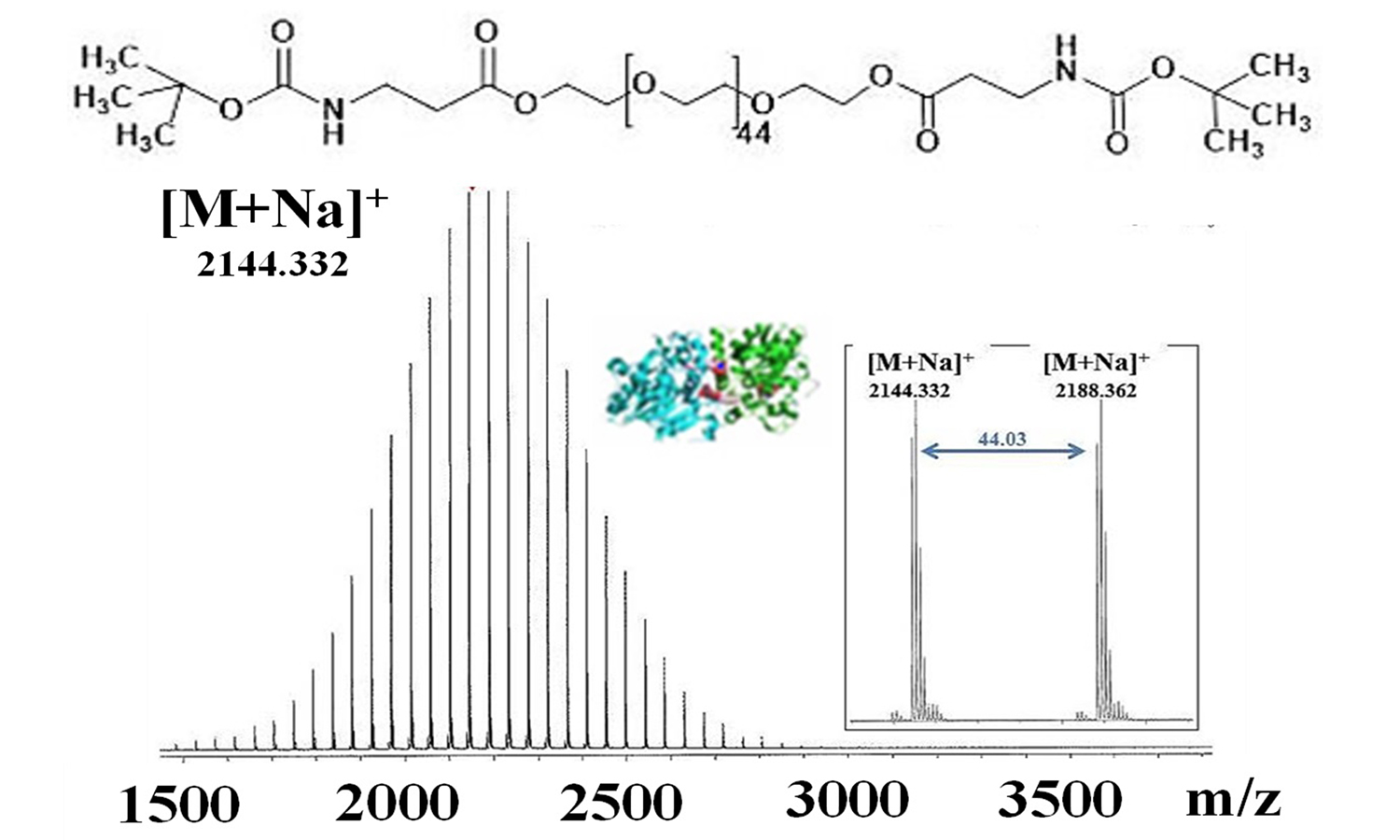
This paper presents a new method for the amine-functionalization of poly(ethylene glycol) (PEG) of Mn =2050 g/mol via Candida antarctica lipase B (CALB)-catalyzed esterification of tert-butyloxycarbonyl (tBOC)-protected β-Alanine and L-Alanine. NMR showed full conversion for protected β-Alanine, and MALDI-ToF demonstrated the purity of the product. After deprotection, the desired diamine-functionalized PEG was obtained. Protected L-Alanine did not reach full conversion by NMR, likely due to the steric hindrance of its methyl side group.
Edris Valadbeigi, Ali Reza Modarresi-Alam, Meissam Noroozifar, Ali Reza Rezvani
Vol. 16., No.9., Pages 939-959, 2022
DOI: 10.3144/expresspolymlett.2022.69
Vol. 16., No.9., Pages 939-959, 2022
DOI: 10.3144/expresspolymlett.2022.69

The derivatives of polyaniline have obtained remarkable attention due to their electronic applications in the field of nanomaterials. This work considers the electronic, structural, and photovoltaic properties of nanocomposites (POT/WO3NPs) synthesized with three different ratios of poly(o-toluidine) and WO3 nanoparticles [a-c (molWO3/molmonomer) 100 = 60, 65, 70%] using a template-free method and a basic mechanochemical reaction in solid-state. The nanocomposites are analyzed and characterized by various spectroscopy methods. The prepared nanocomposites have core-shell morphology. The results of the band gap assessed via cyclic voltammetry and UV-vis specified that the forbidden band gap for (POT/WO3NPs) nanocomposite b [(molWO3/molmonomer) 100 = 65%] are about 1.03 and 1.5–1.9 eV, respectively. The J–V analysis and power conversion efficiency of the fabricated devices FTO|TiO2NPs|POT|Al and FTO|TiO2NPs|POT/WO3NPs (a-c) |Al single-layer solar cells are performed and discussed. The photovoltaic energy conversion efficiency (PCE) of the two devices are 0.18% and in average, 0.57%, respectively. The data show both indirect and direct transitions are observed for the WO3NPs, POT, and POT/WO3NP (b). This investigation demonstrates that the morphology and architecture of nanocomposites (POT/WO3NPs) can be helpful in improving solar cell performance.
Ágnes Ábrahám, Gergő Gyulai, Tünde Tóth, Barna Szvoboda, Judith Mihály, Ákos Szabó, Éva Kiss
Vol. 16., No.9., Pages 960-977, 2022
DOI: 10.3144/expresspolymlett.2022.70
Vol. 16., No.9., Pages 960-977, 2022
DOI: 10.3144/expresspolymlett.2022.70
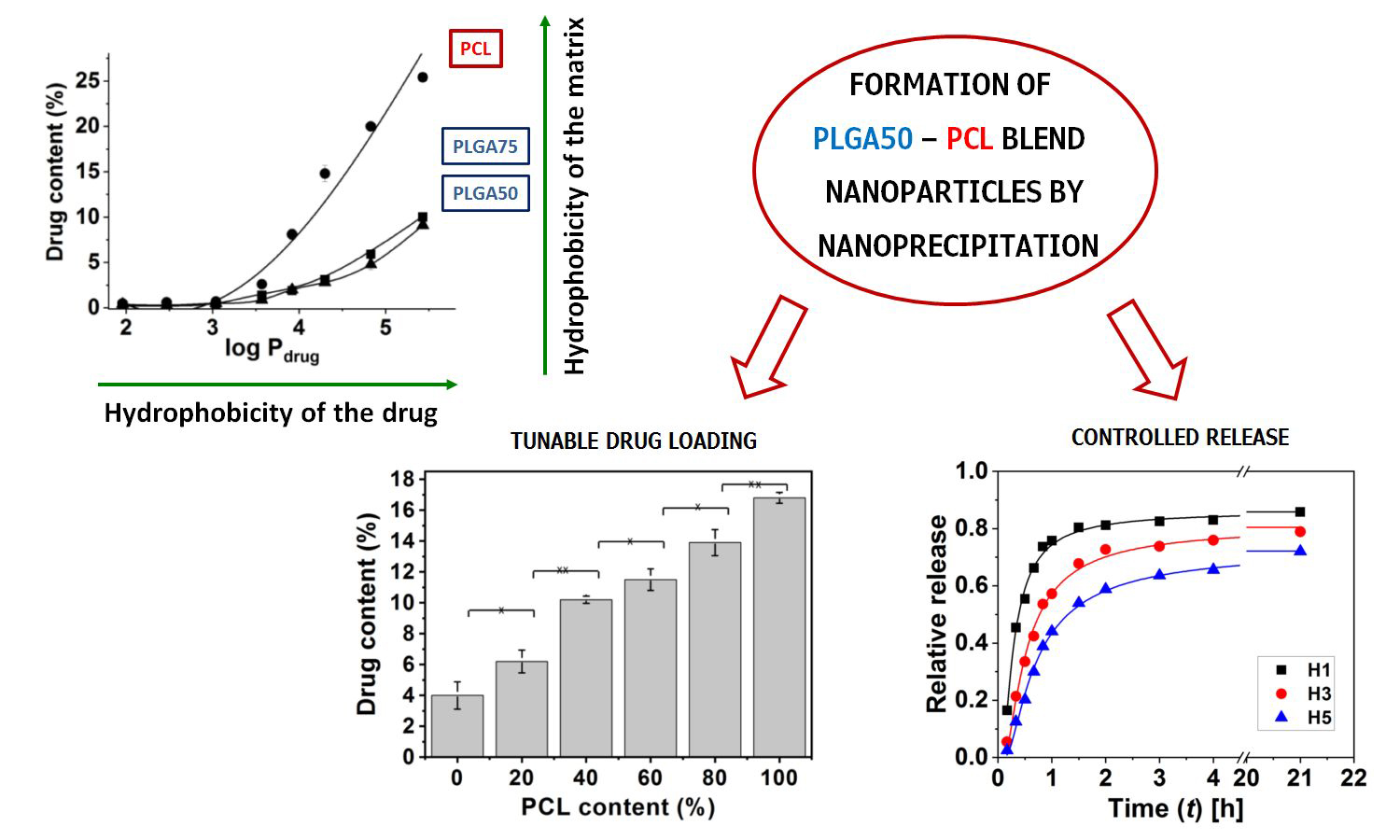
Biocompatible and biodegradable polymers such as poly(lactic-co-glycolic acid), PLGA and polycaprolactone, PCL nanoparticles (NPs) have been used successfully as drug carriers in controlled drug release. The main weakness is the generally low drug loading (1–-5%) of the NPs. An option to enhance the drug content of NPs is to find the optimum matrix for a given drug molecule. To reveal the influence of matrix and drug polarity on the favoured encapsulation, polymeric NPs loaded with a series of alkyl-4-hydroxybenzoate (paraben) with increasing alkyl chain length (C1-C8) as model drugs were prepared by nanoprecipitation method. The paraben series represents the drugs with various polarities while the selected matrix polymers show increased hydrophobicity: PLGA with 50% lactic acid content (PLGA50) < PLGA with 75% lactic acid content (PLGA75) < PCL. The drug content of the PLGA NPs was found to significantly increase up to 10% with the hydrophobicity of the parabens, while encapsulation was further boosted by applying PCL. To find the proper fit between drug and matrix and finely tune the polarity of the NPs, as a novel approach, blends of PLGA50 and PCL were applied as matrix polymers. The drug loading of the NPs was proved to be dependent on the systematically changed blend composition. Furthermore, the introduction of PCL into the PLGA50 matrix improves the release kinetics of the active component.
Vineet Kumar, Tapas Kumar Mandal, Anuj Kumar, Md Najib Alam, Nargish Parvin, Sang Woo Joo, Dong Joo Lee, Sang-Shin Park
Vol. 16., No.9., Pages 978-995, 2022
DOI: 10.3144/expresspolymlett.2022.71
Vol. 16., No.9., Pages 978-995, 2022
DOI: 10.3144/expresspolymlett.2022.71
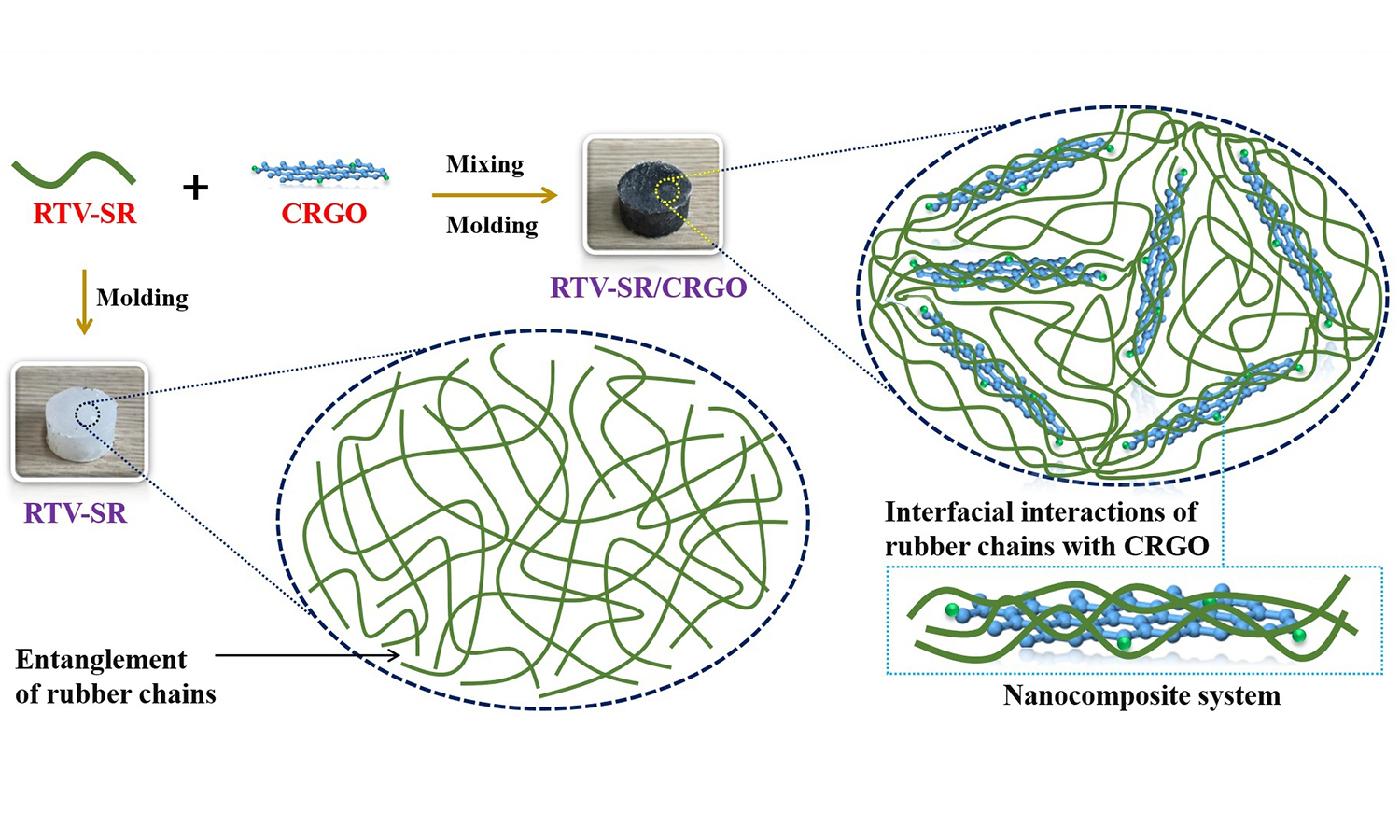
The 6th element of the periodic table is undoubtedly one of the most incredible aspects of creation. Graphene has a 2-D sheet structure comprised of strong covalent bonds between sp2 hybridized carbon atoms and has attracted much research interest because of its unique physicochemical properties. However, the controlled syntheses of mono-layered and few-layered graphene remain topics of research concern. In the present work, chemically reduced graphene oxide (CRGO) was synthesized by ‘top-down’ using the modified Hummers’ method. CRGO and room-temperature-vulcanized silicone rubber (RTV-SR) were mixed to prepare composites with different CRGO loadings. We found that as little as 2 per hundred parts of rubber [phr] CRGO in RTV-SR transformed the normally rigid RTV-SR into a soft composite with a hardness decrease to 15. Moreover, the compressive modulus falls to 0.6 MPa. However, the dissipation losses decrease at 2 phr CRGO, which is a good property. For tensile mechanical properties, the fracture strain increases to 100% while tensile strength falls sharply to 0.1 MPa. Moreover, the electrical conductivity increases as the amount of CRGO increases. So, composite with soft nature and higher electrical properties are useful for various applications such as soft robotics or soft piezoelectric energy harvesting. In this work, the piezoelectric energy harvesting was performed by monitoring the output voltages generated. Output voltages were stable for RTV-SR but increased with increasing cycle number for RTV-SR/CRGO-based composites. This study provides insights into the use of soft RTV-SR/CRGO composites for soft robotics, actuation, energy harvesting, and vehicle applications.
Tianshu Zhang, Hao Wu, Huaping Wang, Abin Sun, Ze Kan
Vol. 16., No.9., Pages 996-1010, 2022
DOI: 10.3144/expresspolymlett.2022.72
Vol. 16., No.9., Pages 996-1010, 2022
DOI: 10.3144/expresspolymlett.2022.72
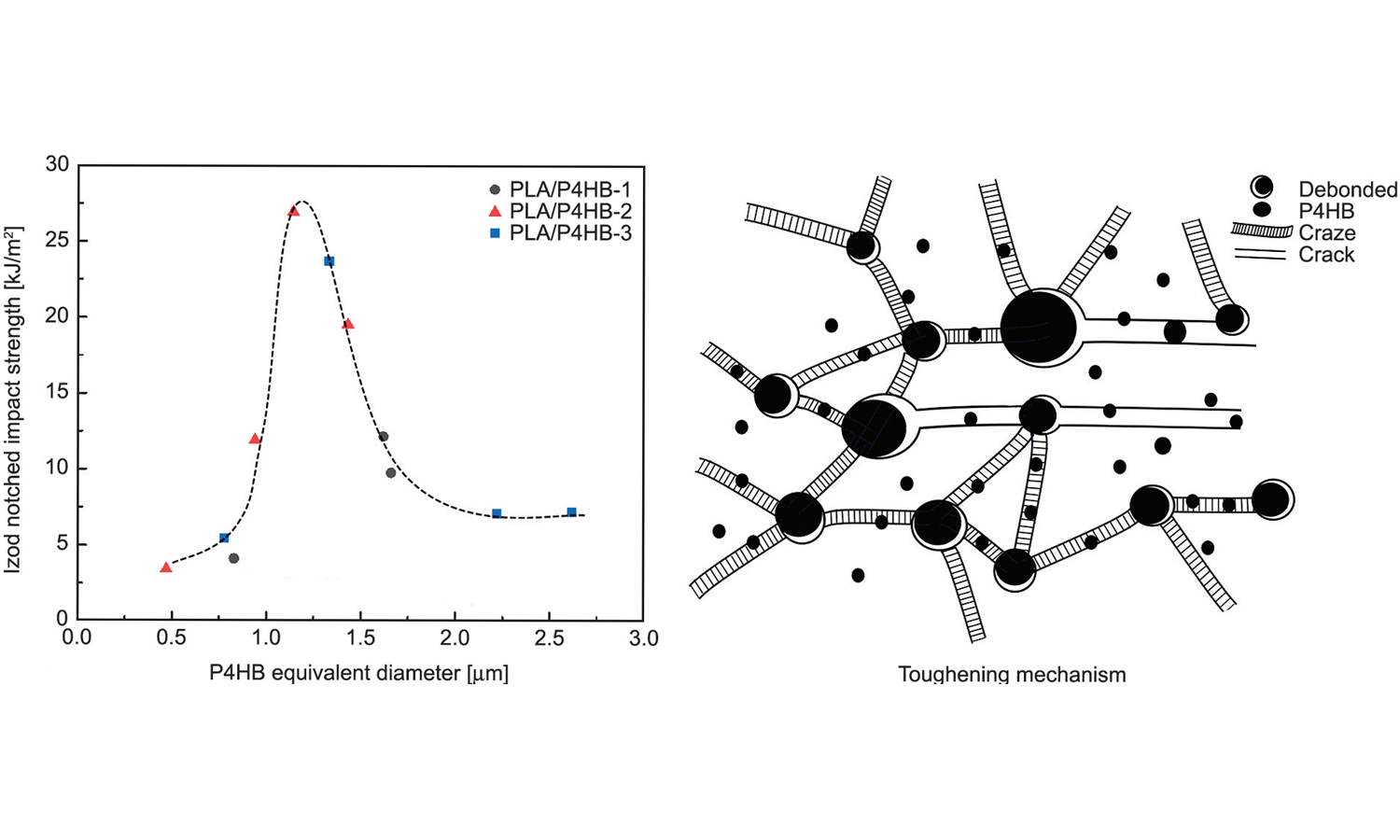
The inherent brittleness of poly(lactic acid) (PLA) limited its practical applications, so toughening modification was necessary. Poly(4-hydroxybutyrate) (P4HB) is fully biosourced and biodegradable polyester with the advantages of high strength and good toughness. In this study, P4HB was used to toughen PLA. The effects of composition, molecular weight, and processing method on the toughening of PLA were investigated. Tensile testing showed the elongation at failure of the PLA/P4HB composites increased with the increased P4HB content while the ultimate tensile strength gradually decreased. The composite containing 30% P4HB can offer a 40 times increase in elongation at failure compared with neat PLA. In the meantime, the ultimate tensile strength remained 48 MPa. Furthermore, the particle size and distribution of P4HB in PLA were tailored by changing the molecular weight and processing method to obtain a higher impact toughness. Importantly, there was a peak in impact strength (27 kJ/m2) of the PLA/P4HB composites when the particle size of P4HB was in the range of 1.1–1.3 μm. This study provides not only a new toughener to prepare fully degradable PLA with high toughness and high strength but also sets up a universal framework for designing high-performance PLA products with suitable toughener particle sizes.


